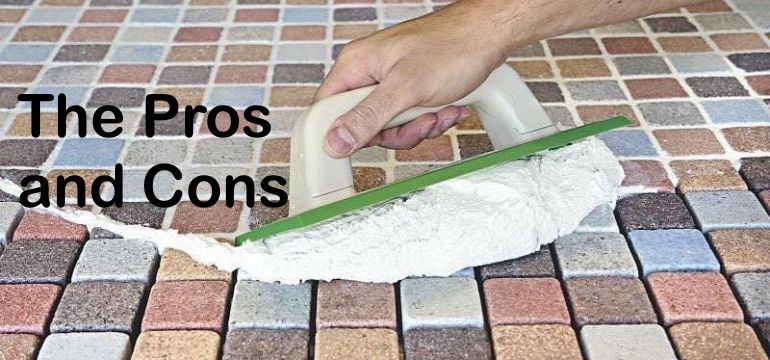Epoxy grout is a common product used in an array of home improvement projects. If you’re unfamiliar with what this is, it’s a special kind of grout that’s tough, durable, and extremely resistant. However, it’s not always the easiest to use.
In this article, you will learn about the common epoxy grout problems and reasons why you should choose to use it.
Before you decide whether or not you should incorporate epoxy grout into your project, it’s best to know some of the pros and cons of using this popular grout.
The pros and cons of using epoxy grout

As mentioned above, one of the biggest cons to epoxy grout is that it’s hard to work with. Epoxy grout is stickier and a little goopier than traditional kinds of grout. It’s also more difficult to set in the grout lines, and it dries extremely quick. Because of this, you have no time to spare. You have to be fast.
The two things you really need to remember when setting your epoxy grout is first, don’t apply too much at one time, and second, work fast. If you wait too long or apply too much, you’ll have to end up rubbing off the hard, excess epoxy grout with a sponge. That’s a hassle, and if your tile isn’t sealed properly, the chemicals in the epoxy grout can cause the color in your tile to become discolored.
To prevent this from happening, read the instructions on the package and mix, spread, and wipe the grout off within the allowed time period. You can really ruin a perfectly good tile job if you don’t use your epoxy grout right.
Another con to using epoxy grout is sometimes pinholes will form after you apply your epoxy grout. This happens when your grout sags after you’ve placed the substance in the tile joints. What happens is air bubbles get trapped just below the surface, begin to rise, and eventually break through creating little holes.
The problem could also be that the tiles have not been bedded properly. This can also cause air bubbles to poke through the surface of the epoxy grout. To fix this issue, you’ll just have to spread more grout over the top of the holes and let the surface dry. Just remember, take your time and make sure you do it right.
Lastly, epoxy grout is much more expensive than using traditional grout. In fact, epoxy grout can sometimes be priced twice as high as traditional grouts.
Although epoxy grouts are much higher than cement grout, you’ll save on maintenance costs over the years. Epoxy grout requires little maintenance. That’ll save you a little cash. Most people who have used epoxy grout before definitely think this grout is worth the extra cost.
So, now that you know some of the cons to using epoxy grout, it’s time to focus on the benefits. One of the most significant benefits of using epoxy grout is that it’s sturdy and extremely durable.
In addition to this, epoxy grout is non-porous and resistant to chemicals, moisture, mold, and mildew. You don’t have to worry about staining the grout. Coffee, wine, and other acidity drinks won’t leave spots or fade the color out. Epoxy grout is perfect for kitchens, bathrooms, and extreme industrial sites. It’s easy to clean and requires minimum maintenance.
Lastly, epoxy grout doesn’t need to be sealed like traditional grout, not even once. Regular grout has to be sealed every few years. By not having to do this, you’ll save you a lot of time, unnecessary effort, and money too. Over a ten year period, you’ll probably save yourself several hundreds of dollars. Now, how great is that?
Acrylic grout vs. epoxy grout
100% solids epoxy grouts and single component grouts are both great grouts to use, but they do have their differences. 100% solids epoxy grouts are designed for extreme, harsh environments. This can include places like meat processing plants, dairy farms, chemical plants, and so on.
Single component grout, on the other hand, is not epoxy. In fact, this grout is made from either urethane or an acrylic-silicone resin. The single-component grout is very similar to the epoxy grout, but there are some differences as well.
Just like epoxy grout, single component grout doesn’t need to be sealed. It’s resistant to chemicals, moisture, mold, and mildew, and it’s stain-resistant, and quite durable too.
A lot of people choose single component grout over epoxy grout because it’s cheaper and easier to use while others believe epoxy is stronger, more durable, and well worth the extra money. When compared, epoxy is the better choice for harsh environments.
However, if you’re on a budget and the grout is for your home, you might be able to get by with a single component grout instead of an expensive epoxy. The choice is yours.
- Painting Over Powder Coat and What You Need to Know - February 1, 2022
- How to Get Rid of Humidity in a Basement Without a Dehumidifier - December 17, 2021
- How to Fix a Crack in Drywall That Keeps Coming Back - September 22, 2021

Steve Mickelson
Friday 27th of March 2020
can acrylic grout be sucessfuly painted, stained or renewed?